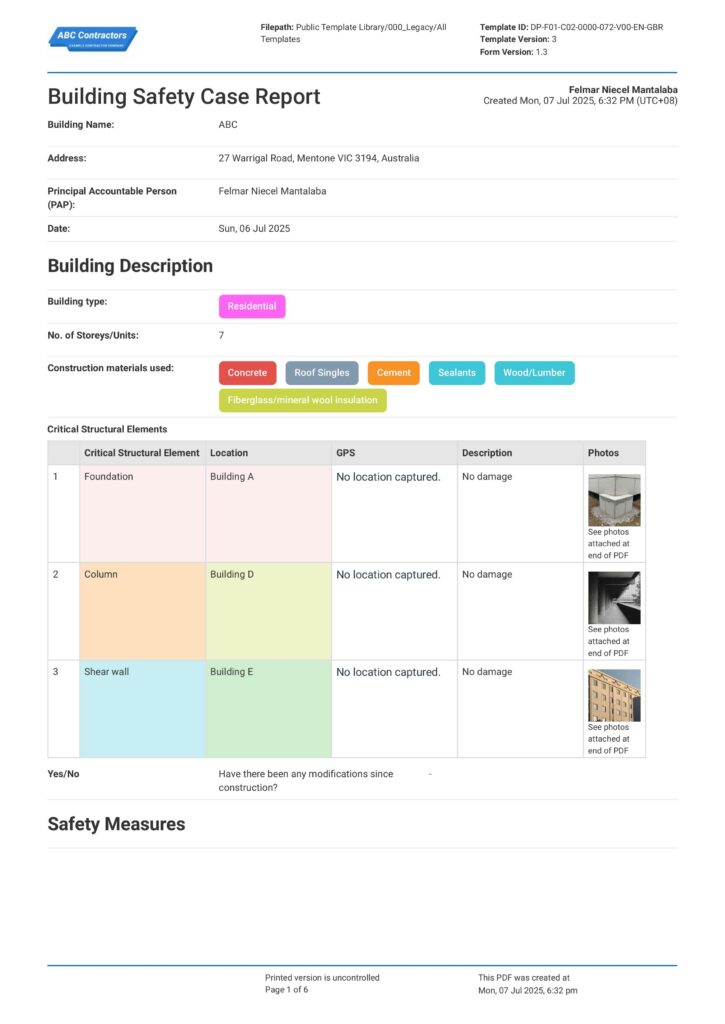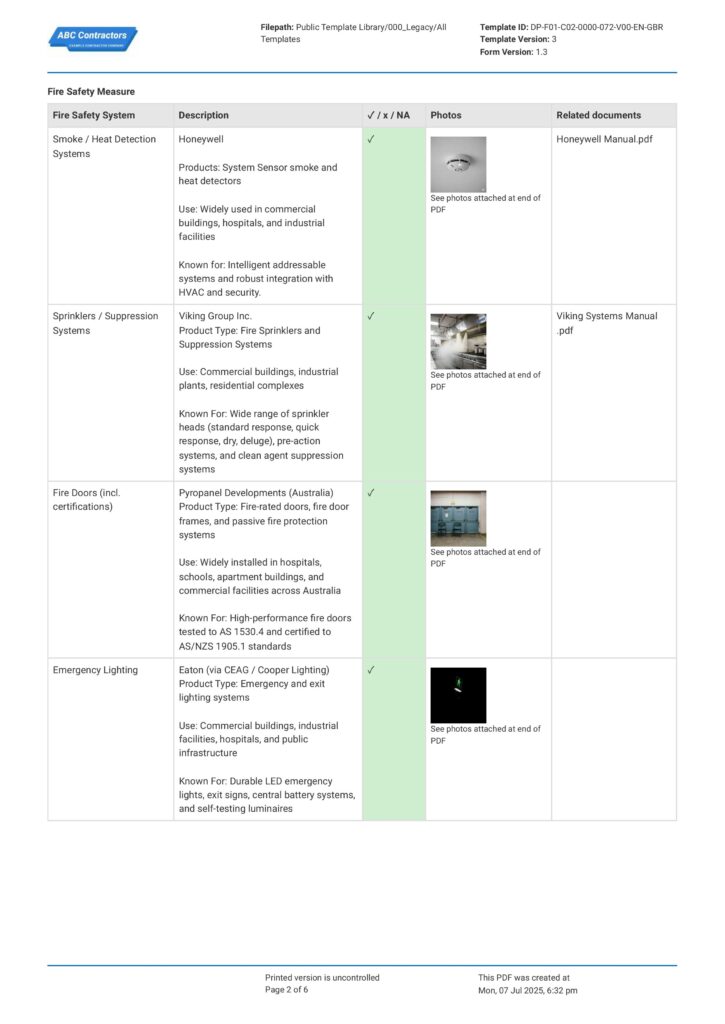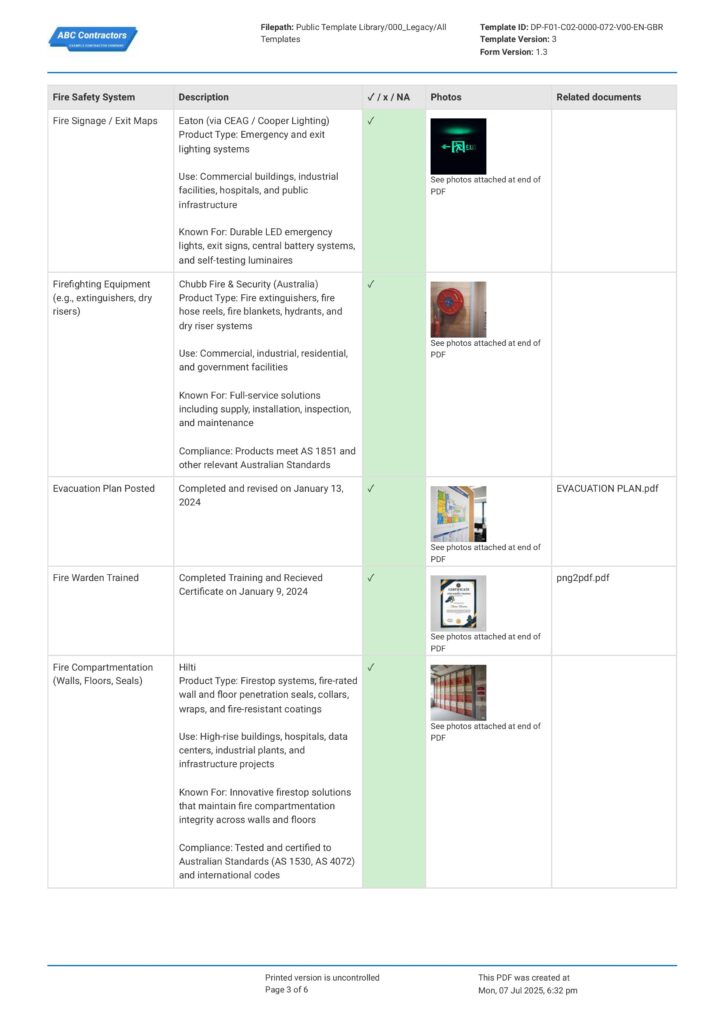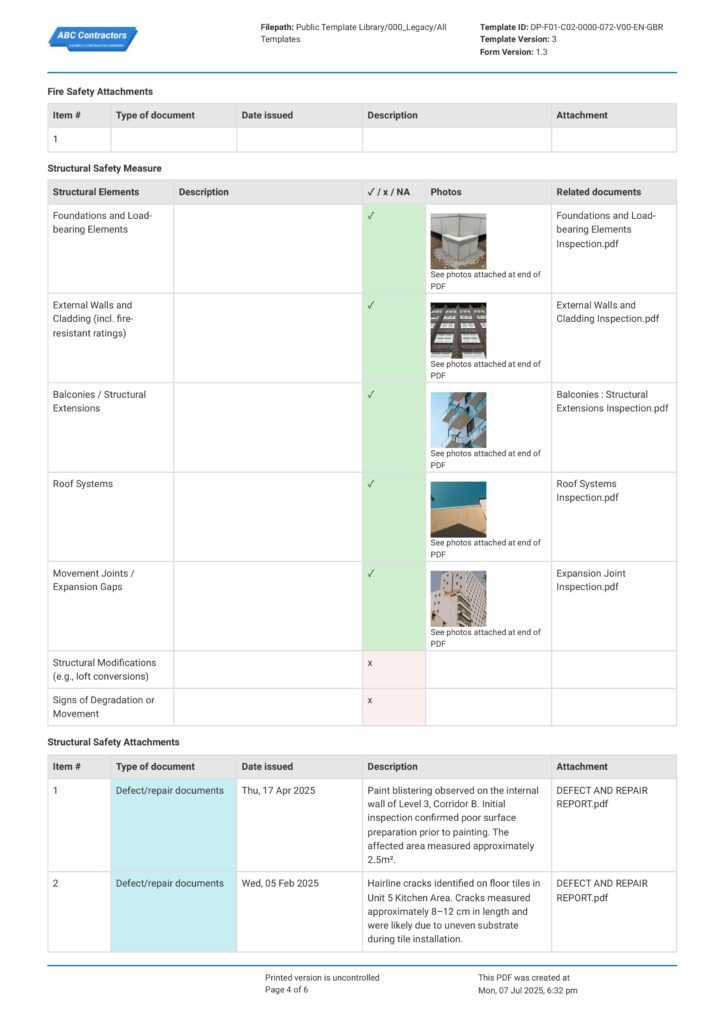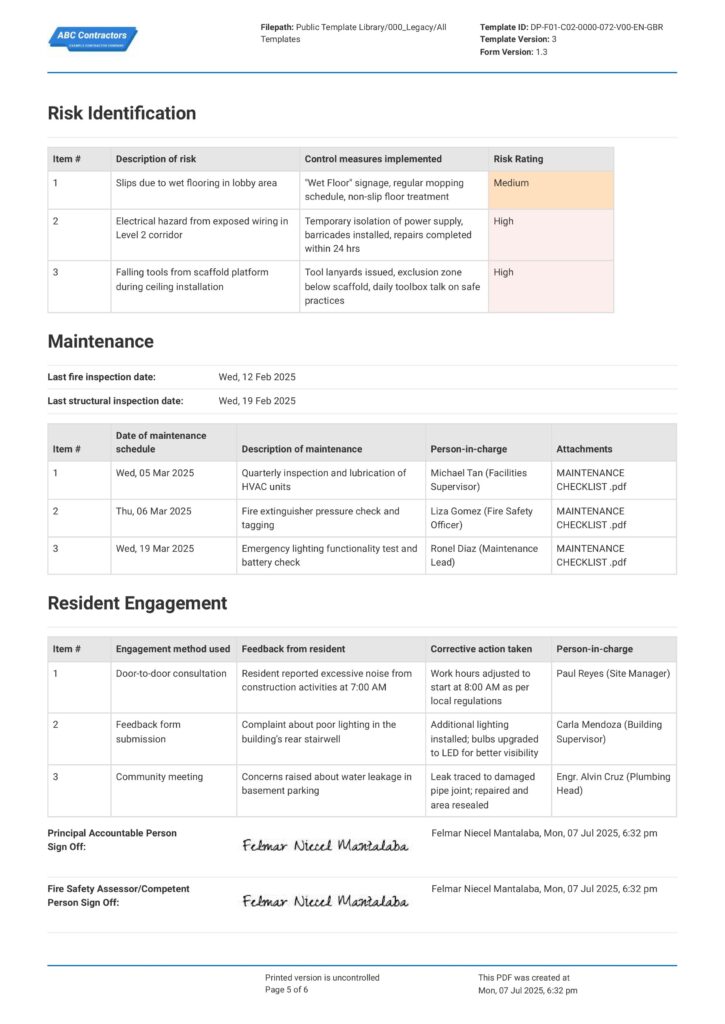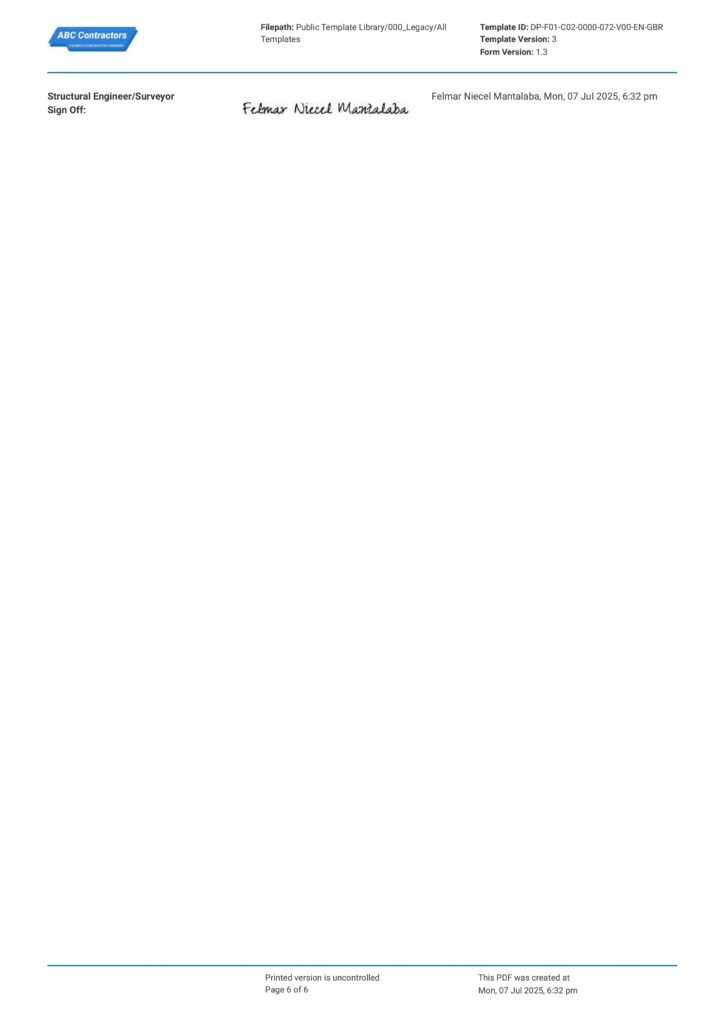Article page – Building Safety Resident Engagement Strategy
Building Safety Resident Engagement Strategy
Building residents are one of the best resources to get information about problems in the building. In this article, we will provide various strategies for obtaining this information and will offer a free engagement log and other free resources to document their feedback.

Table of Contents
Article Summary
- Building Safety Resident Engagement is a mandatory requirement from the Building Safety Act of 2022. The mandate states that higher-risk buildings should involve their residents in identifying and discussing safety-related issues.
- Residents can often notice subtle safety issues because they spend more time in the building. Because of this, it would be beneficial to gain feedback and information form them to further strengthen the safety system of the building
- The different strategies for building engagement are surveys, reporting tools, safety meetings, safety drills, and resident walkabouts.
Why is Resident Engagement crucial to building safety?
Resident engagement is important to building safety because the residents are the constant eyes and ears of the building, which can help spot unidentified hazards. As occupants of the building, they are often the first to notice any safety and maintenance issues, which helps prompt immediate solutions. Having this kind of shared responsibility can further solidify the safety system of the building and promote open communication between building management and residents.
According to the UK Housing Quality Network, engaging residents in preserving building safety can decrease safety-related issues by up to 40% and speed up solutions for found issues by 30%, because residents spot these problems earlier than routine inspections.
The residents and occupants of the building can hold valuable information with regard to safety issues, for they are more familiar with the building. This means they can notice any changes in the building, no matter how small the detail. Taking advantage of this is a low-cost solution that building managers could rely on to improve building safety. By engaging with the tenants, residents, and occupants, building owners will succeed in maintaining a safe environment and building a community where everyone looks out for each other.
What format should a Resident Safety Engagement Log follow?
The Resident Engagement Safety Log should comprehensively document the engagement procedure, feedback, the response to the submitted feedback, and the person in charge of addressing the issue. This information is necessary to ensure that all concerns are followed through and provided with the correct safety measure. A Resident Safety Engagement Log is a supporting document attached into a Building Safety Case Report, which is a more comprehensive document that logs the risks and multiple hazards involved in the workplace – of course making sure that the structure is aligned with the UK Building Safety Act.
To ensure compliance, the log and report must capture all requirements mandated by the Building Safety Act of 2022. To have a clearer picture of what the report should look like, open and study the example below.
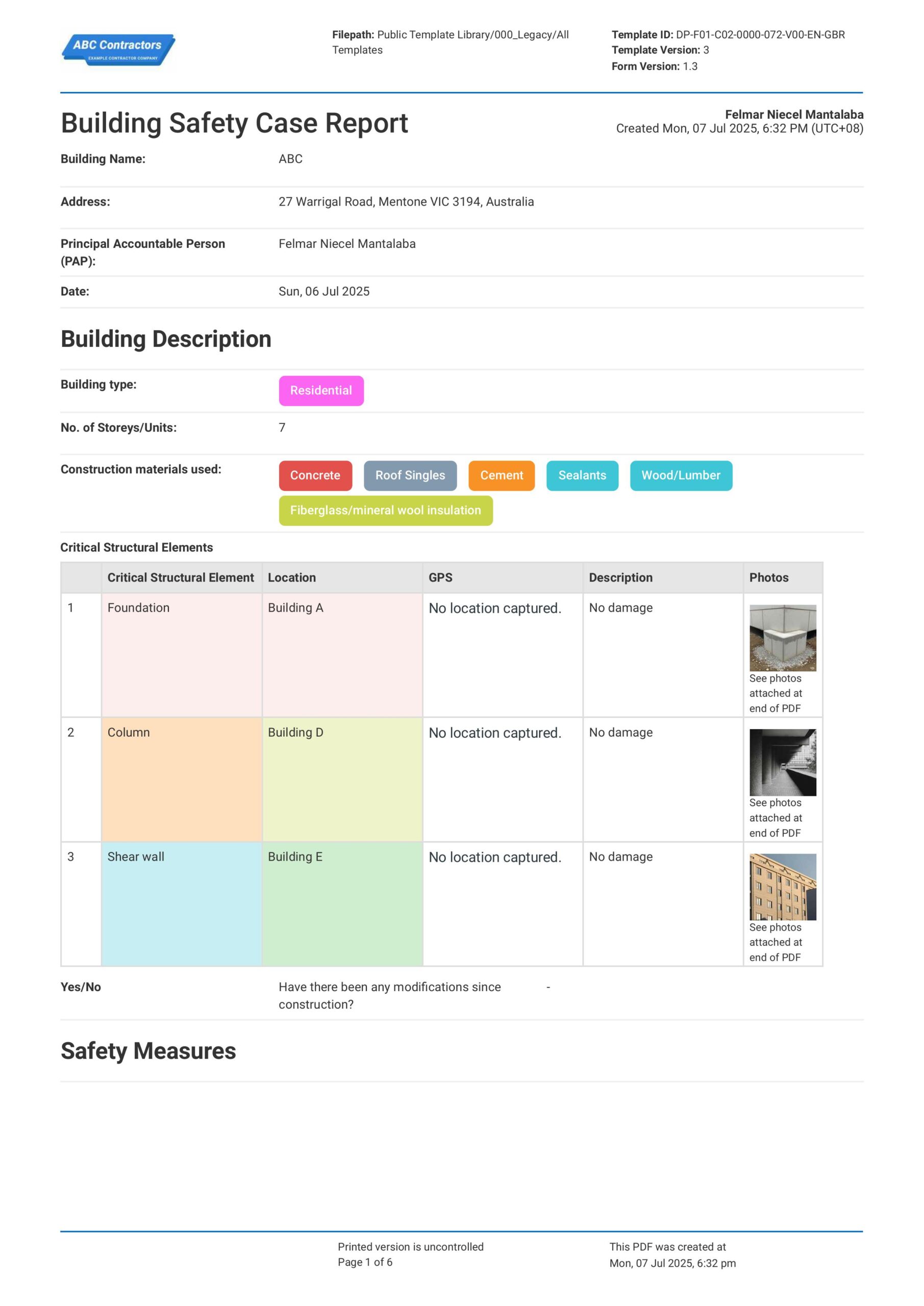
Use this Building Safety Case Report for free
Resident Engagement Strategy – Building Safety Act
The Resident Engagement Strategy of the Building Safety Act consists of various procedures and events that building managers can use to gather information about factors that may cause inconvenience or compromise the safety of residents and occupants. Here are the different strategies for resident engagement:
Surveys and questionnaires
Surveys and questionnaires are simple yet are very effective in collecting information. The flexibility of the survey forms—they can either be paper or digital—makes them a breeze to distribute. Frequent surveys can gather sufficient data to help identify gaps in existing safety controls, which helps the building staff provide solutions to further improve them.
Building Safety Resident Engagement Strategy Reporting tools
Another building safety act resident engagement strategy is to use reporting tools. This strategy helps residents directly communicate with building management if they have noticed or found issues with the building. The tools can be physical—like suggestion boxes, notice boards, and a dedicated phone line—or digital—like emails, building website forums, and apps. This procedure also builds an open communication between building management and the occupants, which gives occupants confidence that their concerns are heard.
Resident safety meetings
The goal of this building safety act resident engagement is to both inform and gain information. Safety meetings educate residents about the building's safety measures and protocols, fostering trust and ensuring their continuous protection. Involving them in the safety discussions can also help gain perspective about things the management might have missed. These meetings will also be an opportunity to raise concerns with management. Discussions like these promote a safer and more informed community.
Safety drills
Safety drills are a way to test out and evaluate protocols. Fire drills, earthquake drills, and structural failure drills are a few of the safety drills where feedback from both building management and residents is obtained. The gathered information could guide the selection of more effective safety equipment during emergencies and enhance protocols for notification, alarm sounding, and evacuations. This information is obtained through post-drill assessments where both building management employees and residents provide feedback on the drill and what they think should be added to help secure lives during emergencies.
Resident walkabouts - Building Safety Resident Engagement Strategy
Resident walkabouts encourage proactive involvement in identifying building safety issues. Residents can provide a fresh perspective by identifying hazards that the management may have overlooked. The building management could create a watch group to gather volunteers to join them when conducting routine building inspections. This approach can foster a sense of responsibility and ownership among residents, encouraging them to report any issues they have noticed or may notice in the future.
A smart approach to reporting safety-related issues
Reporting safety-related issues must be promptly done without delay and should contain all the vital information about the issue or incident. However, if you employ paper-based forms, filling them out can be tedious and lengthy. The physical transfer of forms between people, delays in manual input, and the absence of real-time visibility all contribute to its delay in timely completion. Not to mention that human mistake is more likely to occur when using paper-based methods, which might have an adverse impact on the outcomes of the corrective measures needed for dangers that have been discovered.
But with the Health and Safety Reporting App, you may increase building safety and compliance by streamlining the access, documentation, structures, and tracking of incident reports. With the help of solutions that automate your whole process, you can easily generate reports, evaluate trends, gather incident data, and perform investigations. Along with saving you a great deal of time, the process ensures that regulatory requirements are followed, which keeps you safe and compliant at all times.
Summary of Building Safety Resident Engagement Strategy
The Building Engagement Safety Resident Engagement Strategy is a regulatory requirement in the UK under the Building Safety Act of 2022. Part 4 of its provisions states that the principal accountable person of a higher-risk building must maintain a Resident Engagement Strategy (RES). The goal of this strategy is to access the eyes and ears of the residents to spot unidentified safety issues that weren’t noticed during inspection while informing them that they are continuously protected. Ultimately, the Building Safety Resident Engagement Strategy keeps residents involved and empowers them in matters related to their building’s safety.
Frequently Asked Questions
Is maintaining a Resident Engagement Safety Log and Building Safety Case Report mandatory in the UK?
Yes – maintaining a Resident Engagement Safety Log and a Building Safety Case Report are required under the Building Safety Act 2022 for higher-risk residential buildings in England and Wales. These are buildings that are at least 18 metres tall or have 7 or more storeys with two or more residential units. To stay compliant, building owners or accountable persons should keep a detailed log of how they engage residents on safety matters, including consultations, updates, and feedback received. This log forms part of the broader Resident Engagement Strategy, which must be regularly reviewed and shared with residents to ensure transparency and ongoing safety collaboration.
How is technology transforming the way safety logs and reports are created and managed?
Technology is completely reshaping how safety reports are done by moving away from slow, paper-based systems and replacing them with smarter digital tools like Dashpivot. Instead of filling out forms by hand and chasing signatures, teams can now report incidents on the spot using mobile devices, automate workflows, and ensure every step is properly documented. The result? Faster reporting, fewer errors, stronger compliance, and a clearer picture of what’s really happening on buildings.
Does Sitemate offer templates for safety logs and reports?
Yes - Sitemate offers ready-to-use and editable Daily Safety Report Templatethat can also be edited for your workflow. Buildings of all sizes in the construction and property management industry are using these templates right now to streamline their daily safety checks, reporting routines, and site documentation processes.
Related resources

Mandatory Occurrence Report
Document and complete any occurrences in the workplace aligned with the UK Building Safety Act.

Fatigue Self-Assessment Form
Use this questionnaire to assess the degree of exhaustion among workers to improve well-being and enhance work quality.

Building Envelope Inspection Checklist
Detail and log issues and concerns of the building envelope with this inspection checklist.
